V-F-X Ljubljana, 19 – 21 May 2022
Venues: Slovenian Cinematheque, Cukrarna bar, Slovenian Film Database
Thursday, 19 May 2022, 5 pm
Slovenian Cinematheque, Museum Lecture Room
Katrin Mundt: Curating Film and Video – A Self-Erasing Lecture
Lecture in English
Free Entry
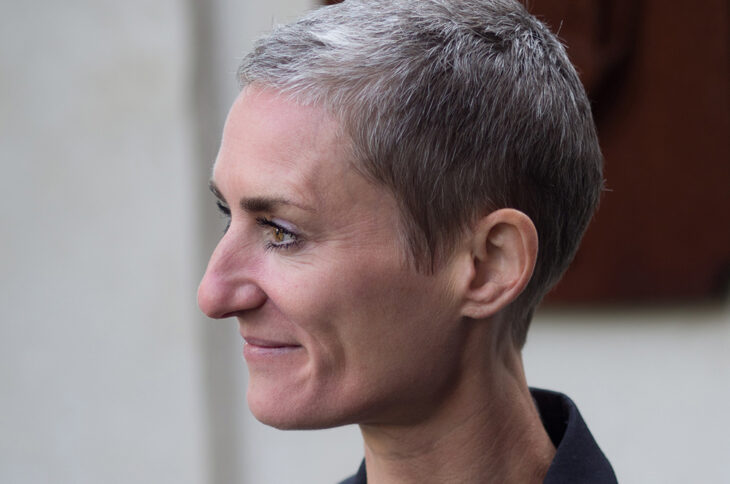
The lecture will revolve around the specificities of curating artists’ moving image work, aiming to combine practical and theoretical approaches to the field. It will discuss questions of researching, selecting and showing work in various screening, performance and installation formats, as well as the ethics of production, distribution, and presentation of time-based art forms, and film and video in particular. The lecture will also discuss how the experience of the last two years has shaped curatorial work and its field of operation – the role of the curator as the one facilitating access to and communicating what film is or does, our understanding of the concepts of “audience” and “public”, as well as ideas of “liveness”. The past two years have also foregrounded the urgency to discuss questions of fair pay, sustainability, diversity, and access in the art field in general, and film and video in particular.
Katrin Mundt is a curator, writer and co-director of the European Media Art Festival (EMAF) in Osnabrück. She has developed film programmes and exhibitions for, among others, Videonale, Bonn, HMKV Dortmund, WKV Stuttgart, Museum Wiesbaden, Matadero Madrid and Center for Contemporary Arts Celje. She was a programmer for Duisburger Filmwoche, Short Film Festival Oberhausen and Kassel Dokfest. Seminars, workshops and lectures at Ruhr-Universität Bochum, Düsseldorf University, Goldsmiths, London, Academy of Media Arts, Cologne, HBK Braunschweig and Merz Akademie, Stuttgart, among others. She regularly writes on artists’ moving image, especially its intersections with documentary and performative practices.
______________
The programme is prepared in partnership with Goethe-Institut Ljubljana and the Slovenian Cinematheque and is supported by the City of Ljubljana – Department for Culture and Kultura nova Foundation. The lecture is part of the World of Art School public lectures.
Thursday, 19 May 2022, 7 pm
Slovenian Cinematheque
Space Dynamics
Curator: Marina Kožul
Tickets: 4,40 €
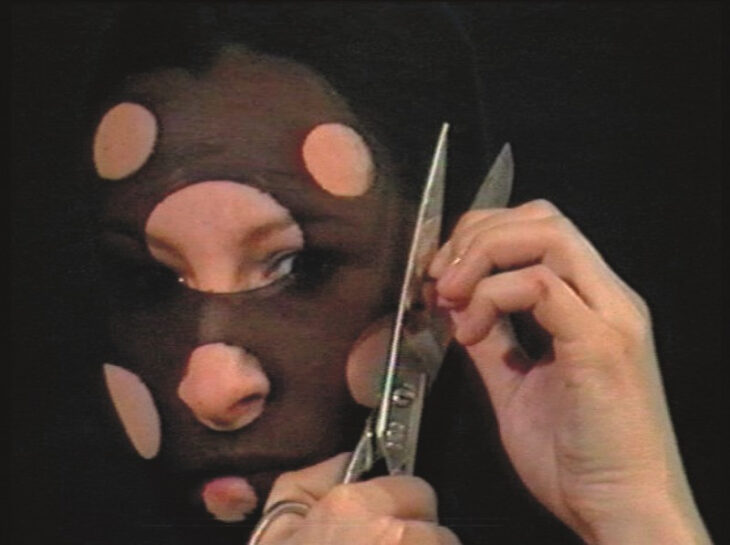
Borrowing its title from physics, this film program unambiguously reveals its obvious intention – to explore underlying forces of movement and action by film means and language. Whether their creative background is multimedia merge, hand processed analog film, object animation, psychological drama or (desktop) documentary, Croatian female authors organized around this theme of dynamics of space meticulously reverberate political metaphors and personal concerns.
The program will be presented by the curator and program director of the 25 FPS Festival from Zagreb Marina Kožul.
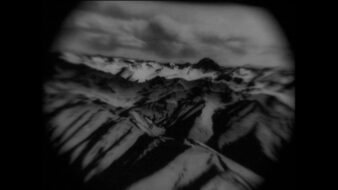
Hrvoslava Brkušić, Croatia, 2018, DCP (shot on 16 mm), 11′ 56”
______________
The starting point for this work were the slides found at Zora Film, a company that produced educational films in the 1950s. Intended to be used as visual tools during geography classes, these images were taken in different parts of the world. However, the author choses to work with only one motif – that of the mountains. By using complex post-production methods, which include digital and analogue technologies, the photographs on the slides come to life, transforming themselves into moving images.
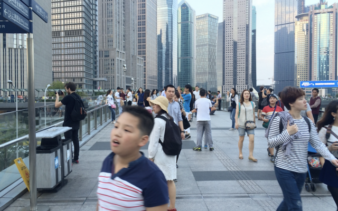
Dalija Dozet, Croatia, 2020, DCP, 11′
______________
Sometimes it is necessary to go to the other side of the world to open the topic of intimacy. Sometimes it is necessary not to shoot a single frame to make a film. Sometimes there is an attempt to create closeness by increasing the distance and the impossibility to do so tries to camouflage itself with an adventure story. Sometimes I think I speak Chinese.
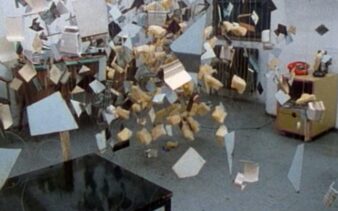
Nicole Hewitt, Croatia, 1999, 16 mm, 8′
______________
In/Dividu questions integrity and stability of things dividing them in basic elements and questioning their origin. Experimental exploring of deconstruction and dislocation of the matter. Multi-awarded film.
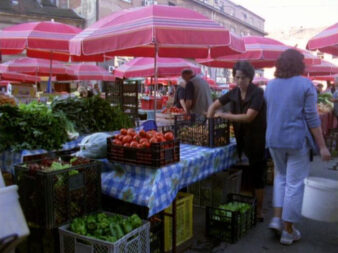
Ana Hušman, Croatia, 2006, digital format, 9′
______________
For the preserves traditionally prepared to last throughout the winter, only local produce is considered worthy, it has to be treated, and conserved, for it to be safe, and caught at its best moment of maturity. This process demands that all foreign bodies be destroyed, that only the best pieces are used, those without fault, all this need be cleansed for the preserved to be safe from all decay.
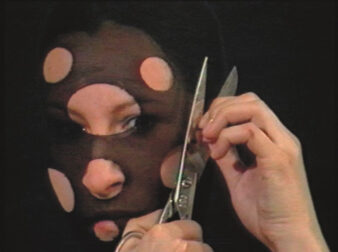
Sanja Iveković, Croatia (Yugoslavia), 1982, digital format, 3′ 43”
______________
Exploring the relationship of the individual, society and television in her video, the author stages a close-up performance in front of the camera. With huge scissors she is cutting one by one holes in the black stocking that covers her face, thus “filling in” each new hole with a new clip from a TV show History of Yugoslavia. The act of bearing the face and “liberating” personal identity is simultaneously an anxious confession of being personally defined by social stereotypes mediated through TV images.
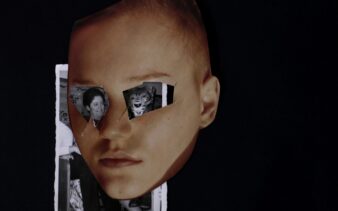
Sara Jurinčić, Croatia, 2018, DCP, 9′
______________
At that moment, all the news published on September 3, 2015 became real. Banalities of the day and personal memories got mixed up incredibly strongly.
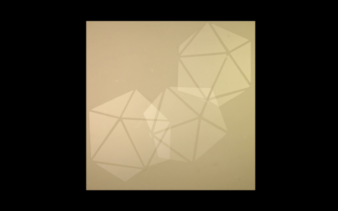
Leona Kadijević, Croatia, 2017, DCP, 8′
______________
Which story is true and how are we supposed to perceive the world around us? In Periphery, challenging one’s own ideas and points of view is juxtaposed to a limitless number of stories, facts, and thoughts, provoked by an ordinary everyday thing like a sunflower.
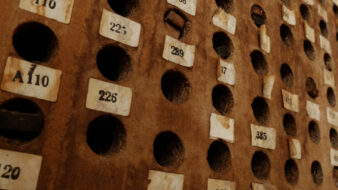
Neli Ružić, Croatia, 2019, DCP, 14′ 30”
______________
Former Yarn and Thread Factory Dalmatinka Sinj was one of the most successful textile companies in Yugoslavia. From its establishment in 1951 to the beginning of the 90’s it was the basis of economic life in the town of Sinj, Croatia. It also had a key role in the emancipation of women who made 80% of its workforce. Recorded in 2017 during the end of the bankruptcy proceedings and in 2018, when the factory was sold to a company that intends to change its function to a business center and venue for wedding receptions, the film represents an epitaph for the factory and its workers. Movements of cotton and thread in the ruins of the famous factory, the remnants of machines and empty halls are interwoven with scenes from the experimental film Threads, filmed in the golden days of Dalmatinka.
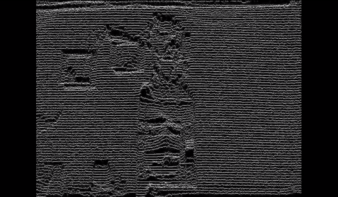
Mateja Zidarić, Croatia, 2021, DCP, 12′
______________
A small shift in one of the microcosms occurred. To this shift I willingly attribute a meaning borrowed from mythology. A myth as a metaphor, or a myth as a means of destruction of everyday fears that might arise.
Thursday, 19 May 2022, 9 pm
Slovenian Cinematheque
Retrospective: Vladislav Knežević
Tickets: 4,40 €
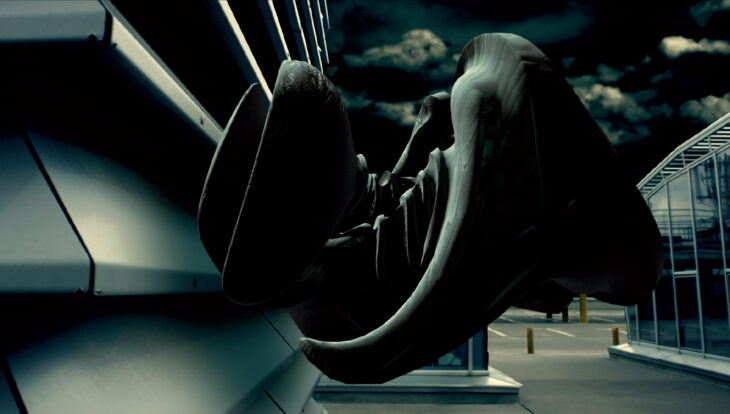
The film trilogy consists of unique chamber science fiction / experimental / animated hybrids. The first two films will be screened with a stereoscopic 3D display system.
Screening in the presence of the author.
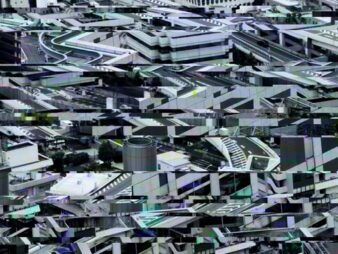
Vladislav Knežević, Croatia, 2014, DCP, 12′ 45”
______________
A.D.A.M. is a film about the attempt to obtain control over a monitored piece of space junk which unexpectedly gained consciousness. The fall of an asteroid mining device named A.D.A.M. (Autonomous Drone for Asteroid Mining) causes the strengthening of its cognitive processes and activation of the autonomous mode. This leads to its refusal of communication with the satellite company operators. An atlas of intensive empty landscapes, urban megastructures and lost horizons immersed in a cacophony of languages, codes and communication networks forms the basis of this metafiction about the relationship between man and machine. Their joint trajectory toward overload starts with the act of leaving the sea, continues by passing through mythic ambients and finally ends with the arrival in the unstable and saturated space of contemporary hyperurbanism. Efficient solution algorithm: Non-existent.
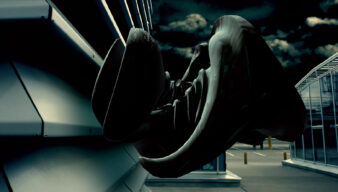
Vladislav Knežević, Croatia, 2018, DCP, 19′
______________
Gravitational waves are passing through every existing dimension, even the almost undetectable ones. The scientific experiment, in its basic utilitarian nature, is aimed at the understanding of the multidimensional structure of things and has the potential for an uncanny experience. The device has successfully detected the unknown dimension at an infinitesimal scale and set up the parameters for magnification and tracking of all the activities in the ambient of non-place visible to us. By its typology, the universal architecture of non-place is optimised for documenting the unknowable and determining the topology of the unexpected. The film follows the course of the intense activities of the entities present in the N dimension that generate a sort of beyond-human experience.
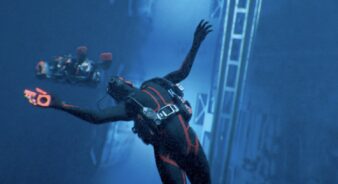
Vladislav Knežević, Croatia, 2021, DCP, 20′
______________
In an underwater robotics test pool, a machine infected by an unknown biological conglomerate conducts a fatal manoeuvre. The new compounds create their own forms, self-sustainable, self-forming and adaptable. The Anthropocene, a human product, has opened a possibility for the extension of the body without organs to host other forms of life, inhumanly wondrous and unpredictable.
Friday, 19 May 2022, 5 pm
Slovenian Cinematheque
Vladislav Knežević: Masterclass
In English
Free Tickets
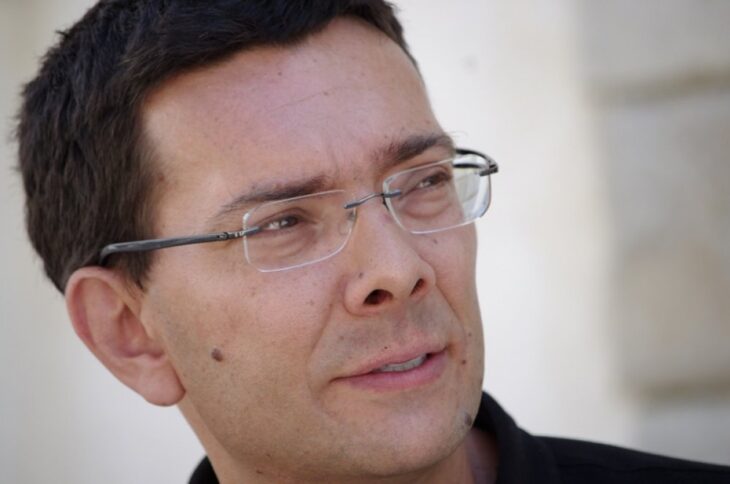
Vladislav Knežević is one of the leading Croatian artists in a wide field of experimental audiovisual practices. He draws inspiration and concepts for his projects from historical avant-garde movements as well as from the findings and assumptions of modern science. In the masterclass, we will take a look at his creative process and the conceptual designs of works that emerge at the intersection between science and art. Q&A after the screening with the author and Peter Cerovšek, head of the DIVA Station archive.
Vladislav Knežević (Zagreb, 1967) is a media artist and director. He studied film and TV directing at the Academy of Dramatic Art in Zagreb and De Vrije Academie in The Hague. He primarily focuses on audiovisual research and creates using filmed video materials, digital photography, micro-animation, stereoscopic 3D technique and generative electronic sound in an attempt to create a new film media watching experience. His interests revolve around concepts referring to the marginal areas of realistic categories, the experience of new media images, digital aesthetic, utilitarian/fantastic constructs and the consequences of technological-scientific research on human experience. He professionally pursues TV directing, working with multiple cameras, and as a director he made almost 2000 TV shows and documentary projects between 1994 and 2017 (Drugi format, Modul 8, Briljanteen, Animatik, Videodrom, Nove kolekcije, DM talks to DM, Nove tendencije, Crna kutija). Since 1989 he has been making experimental and art films, screened at over 200 festivals and exhibitions in Europe, USA, Australia, Japan, Brazil. Winner of two Oktavijan Awards (Arheo 29, 2010, and A.D.A.M., 2015). Vladislav took part in HT Contemporary Art Award exhibitions at the Museum of Contemporary Art in Zagreb in 2016, 2018 and 2019. A co-founder and curator of the Festival 25 FPS (2005–2009) and in 2017 a founder of collaborative media project Sonvoyce on Source (CD edition Readouts, 2018, Consequent Recordings). In the early 1990s he worked on several music videos shown on TV channels such as MTV Europe, Viva, MCM, with the FX Interzone collective.
Friday, 19 May 2022, 7 pm
Slovenian Cinematheque
Retrospective: Vladislav Knežević
Tickets: 4,40 €
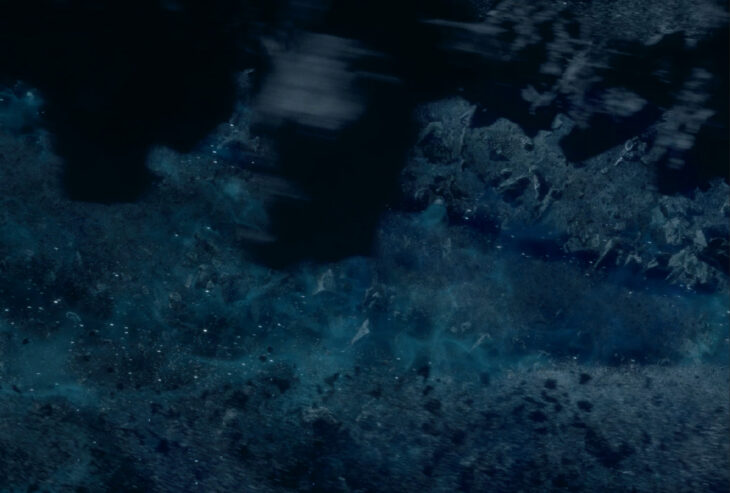
The first two films refer to the time of the early avant-garde and art in the period 1900-1930. The last three films rely on the tradition of structuralist film and the potentials of the film medium in a unique atmosphere of ambience, typical of hard science fiction, with extremely minimal film procedures.
Screening in the presence of the author.
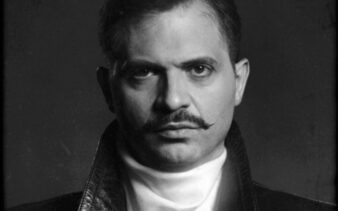
Vladislav Knežević, Croatia, 2019, DCP, 18′ 48”
______________
The launch of an espionage balloon from an Italian village, located opposite the southern part of the Istrian peninsula, marked the beginning of a most unusual adventure for aviation officer Giuseppe Rosignoli. The decision to go on a reconnaissance mission over the heavily fortified Austro-Hungarian military zone of Pula was made several months before the Kingdom of Italy entered World War I in 1915.
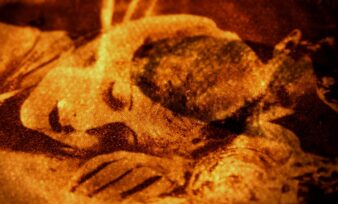
Vladislav Knežević, Croatia, 2010, 35 mm, 9′ 30”
______________
If the new world ever existed, it is still hidden way behind the horizon. An analogue clock is ticking away the last seconds before the world crisis, while a noble patina covers fragments for archaeologists of memory. A silent relief in between two wars; a time of diffident bodies, of melancholy leisure, of secret divisions of the world. It is 1929. Peace before an enormous explosion.
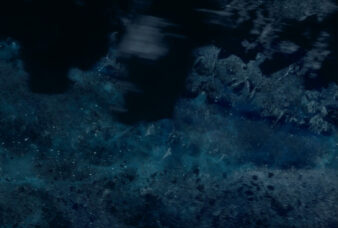
Vladislav Knežević, Croatia, 2022, DCP, 8′
______________
Integrating itself within the micro level of high-speed space dust particles, the nanogenerator is coding models, conjectures and possibilities. The process encompasses firmly elaborated scientific theses, doubts and phantasms, imaginariums and fringe discourses at different scales. The interior architectonics of pataphysical machine is scaled up from the nano level and is rendering emergence with its movements. The spiral rotation with variable speed within the particle simulates, but also potentially actualizes formation. The apex of the null cone represents a process of energy exchange in the form of photon absorption and emission. In the central point the observer is within the moment of now as an interactive part of creation with an emergent uncertain future. The film is not an attempt of scientific visualization, but rather an energy induced construct.
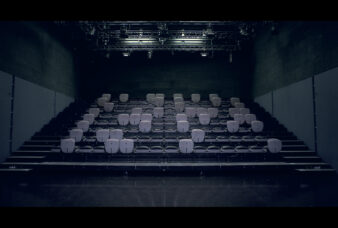
Vladislav Knežević, Croatia, 2013, DCP, 7′
______________
In the geometry of a static shot, elements of architecture and space become the subject of a visual experiment. The video consists of three parts: activation (drawing the auditorium out) – coding (central part) – deactivation (drawing the auditorium in). The key notions from Max Bense’s text Aesthetics and Programming (1968) are coded in zeros and ones by way of an animation procedure of lifting and lowering the seats. This cryptic confession of the machine anticipates the virtual reality in which all communication is mediated by the sequences of bits. The auditorium, composed of eight rows with 16 chairs, depicts the field of articulation of a digital code. Architecture of the hall represents institutional surroundings, physical space and a place of establishing a relationship with the perception of space, time and film.
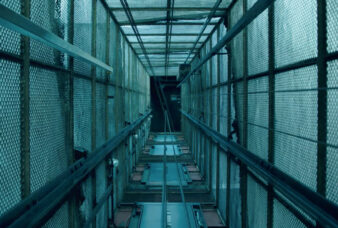
Vladislav Knežević, Croatia, 2020, DCP, 6′ 30”
______________
In the parallel process, space and time are defined through the movement of the body and the body is inevitably transformed by the movement in time and space. Accelerated through iterative procedure, dimensions start to merge and the body falls to its astronomical existence. Zero is where time, space and body become one. (Ivor Glavaš)
Friday, 19 May 2022, 9 pm
Slovenian Cinematheque
Riddles
Curator: Katrin Mundt
Tickets: 4,40 €
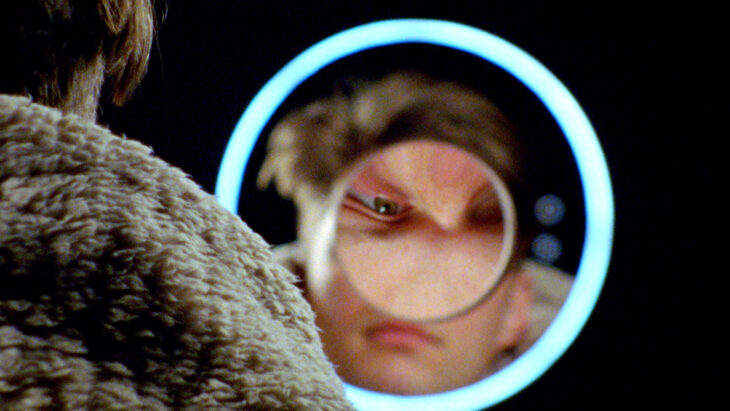
Riddles brings together four artists’ films that reflect on the role of narrative in the making of what we perceive to be reality, that play with trickery and illusion, and the critical potential inherent in fiction and fabulation. They move in circles or between knots in time, look closely at surfaces to imagine impossible depths, invent a future to speak about the past, and invite us to follow while erasing their own traces.
In Gernot Wieland’s works, film, performance and drawings combine with the recollections and observations of a first-person narrator, whom we – so suggestive is his address, so poignant his remarks – identify with the author as a matter of course. We willingly follow the tracks he lays – the childhood memories that paint in miniature the picture of a traumatized society, the cinematic reconstruction of a play that was never performed, the research into a psychiatric movement that threw open institutional doors to renew communal life. Against an outside that is silent and an inertia in which one has made oneself at home, this “I” unfolds a personal narrative in which the outside resonates, in which people become birds, a nation appears in potato print, and drawing and writing merge into each other – a speaking addressed to an absent one that liberates itself by giving itself away.
Half Wet is Carlos Irijalba’s first film that transports us to an unspecified future. In Oaxaca, Mexico, a man goes about his work, as generations before him have done: he cleans the swimming pools that, once built for tourists only a few meters from the sea, have not been visited for a long time. In Irijalba’s film, the oceans have had their day as a habitat for humans. Swimming must be like flying, the protagonist speculates wistfully, and thus indirectly refers to that other form of tourist locomotion that has lost its innocence with the onset of our class-based climate crisis. What is at stake here is not only the fallout of a leisure industry that perpetuates postcolonial inequalities and takes them ad absurdum in the automatism of a misunderstood “tradition”, but also the somnambulistic self-assurance with which we continue to move into this future – as if asleep on an airplane.
In Zachary Epcar’s films, things breathe. In The Canyon, they occasionally sigh or moan softly. Here, objects and buildings, bodies and landscapes appear caught in a continuous loop of mutual stimulation and animation. The camera moves nervously along surfaces in search of depth or friction or seeks a foothold in static shots that exaggerate the trivial into the sublime. The journey through this canyon is like a journey through the infrastructures of desire on which our present moment rests. We feel alienated and yet recognize everything – the longing for “the linens”, or the voices echoing a cell phone buzz. We find ourselves in a rest-less present, in which remembering equals the imprint left in the “memory foam”, and possession is just another name for the loss we experience, for the void, we leave behind when we move on.
The works of Anja Dornieden and Juan David González Monroy are dazzling film illusions, in which the film apparatus itself seems to be addressing us, manipulating us, or leading us astray – to a point between reality and fiction, from which we can no longer tell how we actually got there. Instant Life was created together with Andrew Kim, according to the three authors as a three-part reconstruction of a found film. A film with three lives, in which the living itself is in question. We see crystals and their growth, the formation and decay of cell structures, gathering storms and ominously billowing fog – all deceptions from the bag of tricks of film history, here reconstructed with DIY methods. The timeless artificiality of these creatures and landscapes is gradually revealed, and the more obvious the deception, the more insistent the warning of its corrosive power, the more willingly we allow ourselves to be drawn into the paradoxical intricacies of the narrative. The search for the Sublime Subject is first a riddle, then a gag.
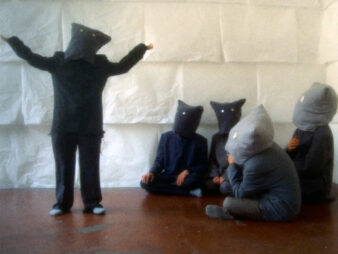
Gernot Wieland, Austria/Germany, 2021, digitaln format, 14′
______________
Bird in Italian is Uccello furthers Gernot Wieland´s interest in psychological states and the constitution of belonging in different social contexts. Drawing upon Daphne du Maurier’s short story The Birds and its subsequent cinematic adaptation, Bird in Italian is Uccello (re)enacts a theatrical production of the horror thriller. Working specifically with an account of a never performed theatre production of Maurier’s story – one that was meant to be staged at a psychiatric hospital in Northern Italy – Wieland’s film inverts the original script’s roles: human characters become birds and the bird protagonists become humans. Deploying Slavoj Žižek’s notion of the ‘real’, this role reversal not only shakes up ideas of reality but through Wieland becomes a way to connect socio-political fear to the migration of birds; conflating social psychology and nature to explore notions of power in turn. (Toby Upson, 2021)
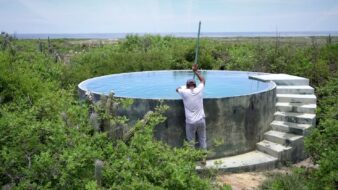
Carlos Irijalba, Netherlands, 2022, digital format, 17′
______________
At a dystopian future moment on the coast of Oaxaca, due to global warming the ocean’s pH levels have acidified, making them unsuitable for humans. Therefore sea tourism has been gone for generations and only the indigenous language is spoken. Wuicho repeats his father’s and grandfather’s ritual of keeping swimming pools pristine while he questions his actions and his predecessors. Irijalba wrote and filmed Half Wet on his own with a reflex camera and a smartphone in ten days, trying to generate no residue in a ready-made mode.
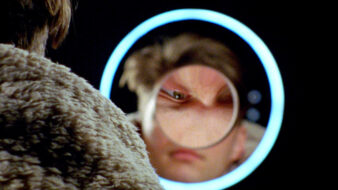
Zachary Epcar, USA, 2020, digital format (shot on 16 mm), 15′
______________
A portrait of the urban residential development as it slips into oblivion.

Anja Dornieden, Juan David González Monroy, Andrew Kim, Germany/USA, 2021, digital format (shot on 16 mm), 27′
______________
The three films you will see are shot-for-shot reproductions of the compilation film Instant Life (1981). Each film in Instant Life (1981) was a remake of an earlier film also called Instant Life (1941). The earlier Instant Life (1941) was a single film, not a compilation. In 2017, we decided to recreate Instant Life (1981). We did not attempt to recreate Instant Life (1941), because that Instant Life is lost. Instant Life (1941) was a silent film presented with live musical accompaniment. After the show, audience members received a printed riddle. Instant Life (1981) is a sound film. The riddle is part of the film. No answer to the riddle exists.
Saturday, 20 May 2022, 7 pm
Slovenska kinoteka, dvorana Silvana Furlana
Echoes and Responses by Vinko Rozman
Curator: Matevž Jerman
Tickets: 4,40 €
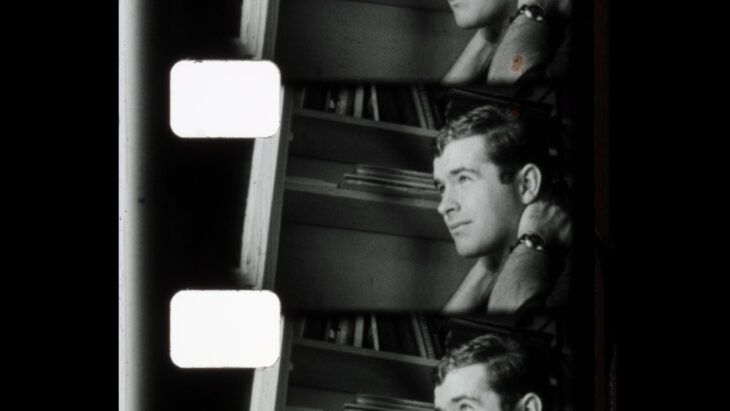
Vinko Rozman, with his extremely diverse oeuvre and distinct authorial poetics, is today considered one of the most penetrating and iconic names in Slovenian avant-garde film. Between 1963 and 1971, under the auspices of Kino Klub Ljubljana, he made more than twenty short films, ranging from socio-political considerations, through sports films or purely formalistic experiments, to intimate and loving film poems. Along with the screening of films that are today part of the special collections of the Slovenian Cinematheque, we will also present digitized and restored versions of the films Echo and Response and (premiere!) Prague Spring.
The programme will be presented by curator and Slovenian Cinematheque associate Matevž Jerman.
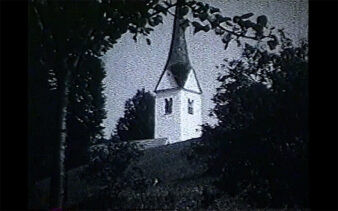
Vinko Rozman, Slovenia (Yugoslavia), 1965, DCP (shot on 8 mm), 5′
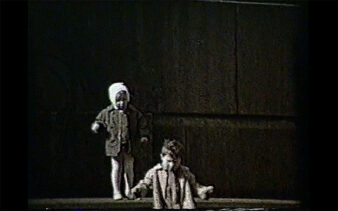
Vinko Rozman, Slovenia (Yugoslavia), 1969, DCP (shot on 8 mm), 11′
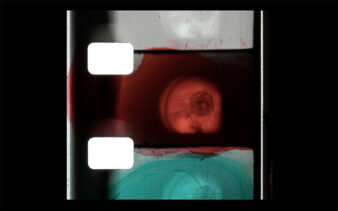
Vinko Rozman, Slovenia (Yugoslavia), 1965, 8 mm, 3′
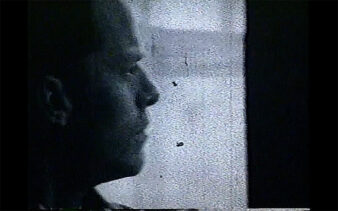
Vinko Rozman, Slovenia (Yugoslavia), 1965, 8 mm, 6′
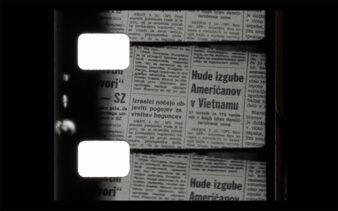
Vinko Rozman, Slovenia (Yugoslavia), 1967/1970, 8 mm, 7′
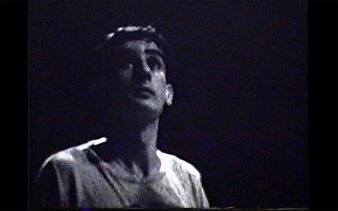
Vinko Rozman, Slovenia (Yugoslavia), 1967, 8 mm, 9′
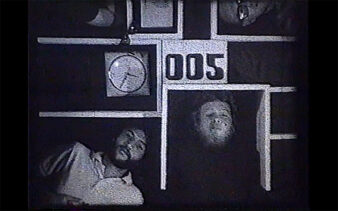
Vinko Rozman, Slovenia (Yugoslavia), 1971, 8 mm, 5′
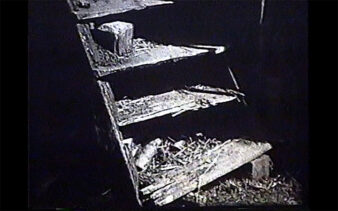
Vinko Rozman, Slovenia (Yugoslavia), 1968, 8 mm, 13′
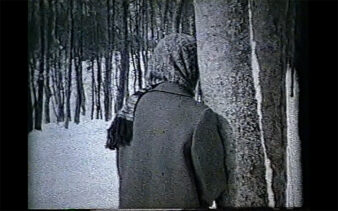
Vinko Rozman, Slovenia (Yugoslavia), 1969, 8 mm, 5′
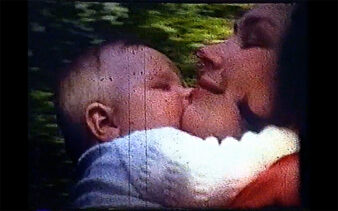
Vinko Rozman, Slovenia (Yugoslavia), 1971, super8 mm, 3′
VR POINT
Thursday–Saturday, 19 – 21 May 2022, during the festival hours
Cinematheque café
Aqualia VR
Vladislav Knežević, Croatia, 2021
Free Entry
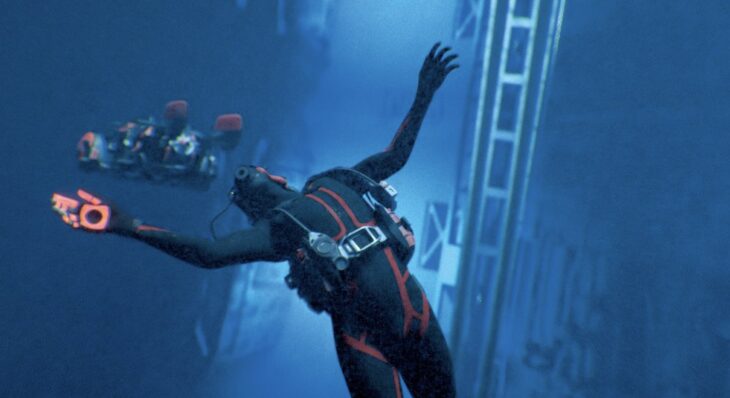
In an underwater robotics test pool, a machine infected by an unknown biological conglomerate conducts a fatal manoeuvre. The new compounds create their own forms, self-sustainable, self-forming and adaptable. The Anthropocene, a human product, has opened a possibility for the extension of the body without organs to host other forms of life, inhumanly wondrous and unpredictable.
Thanks: Multiversum
Saturday, 20 May 2022, 10 pm
Cukrarna bar
Luka Prinčič: trans.fail/xenotopic.network
AV performance
Free Entry
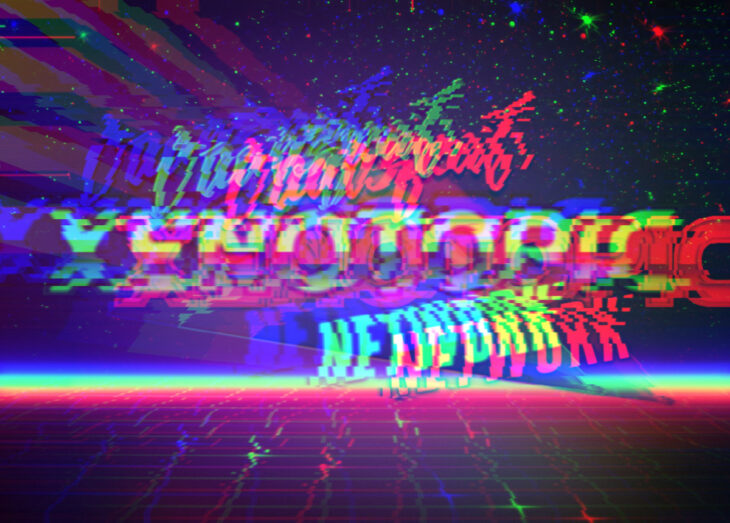
The project trans.fail is a cinema-sounding and (when necessary also) an online series of audiovisual explorations based on the emergence of a synesthetic space arising from closely connected and synchronized sound and moving image.
The central question of the exploration is tied up with the modern living environment, which is in actuality (already) transmedial. In this context, the subject is understood and experienced as being bound in the functionalities and workings of a cyborg, where the question of her rights becomes especially important. However, oozing through the network of different forces is the patriarchal white hetero cis matrix and the mechanism of disciplining, shaping and cultivating. trans.fail is hence informed also by gender studies and feminisms.
The chapter xenotropic.network relies on the concepts of foreign (xeno), space (topic/topos) and network as the primary source of inspiration. These concepts can be understood and read in various ways, thus presenting the grounds for a critical reading of the world as a patchwork of possibilities:
“Technology isn’t inherently progressive. Its uses are fused with culture in a positive feedback loop that makes linear sequencing, prediction, and absolute caution impossible. Technoscientific innovation must be linked to a collective theoretical and political thinking in which women, queers, and the gender non-conforming play an unparalleled role. The real emancipatory potential of technology remains unrealized. Fed by the market, its rapid growth is offset by bloat, and elegant innovation is surrendered to the buyer, whose stagnant world it decorates.” (Laboria Cuboniks)
“… what is at stake is nothing less than a global redefinition of the relationship between territory and networks. There are major geopolitical rearrangements taking place right now across the entire stack, from physical infrastructure to information, financial and monetary networks. These are attempts at determining ‘digital territories’ and grappling with how to define and assert some sort of ‘digital sovereignty’ in network space. And cryptographic techniques are at the core of such emerging arrangements.” (Jaya Klara Brekke)
The audio-visual composition will be premiered live as an audio-visual performance.
Production: Emanat
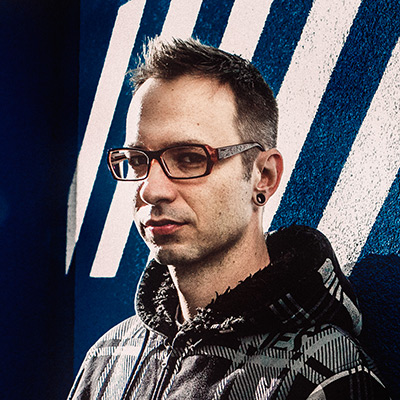 Luka Prinčič (1977) is a musician, sound designer and media artist. He has been writing music, creating sound art, performing, and manipulating new media in various ways since mid-’90s. He specialises in computer music, elaborated funk beats, immersive soundscapes, incidental music for live arts & video, and digital media experiments. His release “Pacification” under Wanda & Nova deViator moniker has been described as “skilfully traversing the boundaries between serious artistic and raving club discourse”. Furthermore, his work with Maja Delak was described as “energetically charged, with a cutting, even punk or underground poetics” and “extremely fresh interplay of different practices from the field of theatre, dance, music and intermedia art” (Liberal Academy’s Golden Bird Award). In 2013 he was awarded with Ksenija Hribar award for his sound design for performances in the field of contemporary dance. He performed at festivals like Ars Electronica (Linz), EMAF (Osnabrueck), Netmage (Bologna) and Trouble (Brussels), worked at Ljubljana Digital Media Lab (Ljudmila) and local hackerspace CyberPipe (Ljubljana), exhibited at Kapelica Gallery, Museum of Modern Art and MSUM Ljubljana, and travelled with his work all across Europe and further (New York and New Zealand). Luka Prinčič is passionate about free software, science fiction, social awareness, critical expressions and peculiarity of contemporary human condition. He currently works at Emanat Institue and runs Kamizdat, music label for adventurous music, in Ljubljana, Slovenia.
Luka Prinčič (1977) is a musician, sound designer and media artist. He has been writing music, creating sound art, performing, and manipulating new media in various ways since mid-’90s. He specialises in computer music, elaborated funk beats, immersive soundscapes, incidental music for live arts & video, and digital media experiments. His release “Pacification” under Wanda & Nova deViator moniker has been described as “skilfully traversing the boundaries between serious artistic and raving club discourse”. Furthermore, his work with Maja Delak was described as “energetically charged, with a cutting, even punk or underground poetics” and “extremely fresh interplay of different practices from the field of theatre, dance, music and intermedia art” (Liberal Academy’s Golden Bird Award). In 2013 he was awarded with Ksenija Hribar award for his sound design for performances in the field of contemporary dance. He performed at festivals like Ars Electronica (Linz), EMAF (Osnabrueck), Netmage (Bologna) and Trouble (Brussels), worked at Ljubljana Digital Media Lab (Ljudmila) and local hackerspace CyberPipe (Ljubljana), exhibited at Kapelica Gallery, Museum of Modern Art and MSUM Ljubljana, and travelled with his work all across Europe and further (New York and New Zealand). Luka Prinčič is passionate about free software, science fiction, social awareness, critical expressions and peculiarity of contemporary human condition. He currently works at Emanat Institue and runs Kamizdat, music label for adventurous music, in Ljubljana, Slovenia.
19 – 22 May 2022
Slovenian Film Database
V-F-X: Gen.Z
Selection of student production
Curators: Vesna Bukovec, Peter Cerovšek
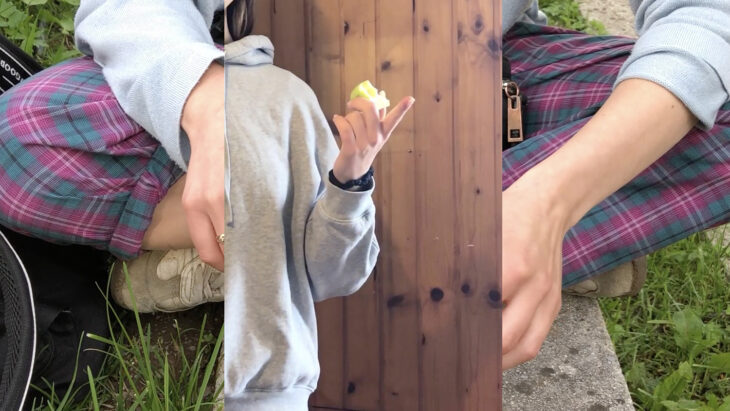
Explorations in various genres and styles reveal young people’s perception of themselves and their place in the world. The works were mostly created in the past two years, at a time which was particularly difficult for them due to the prescribed social isolation during the epidemic. Topics featured in the selection and addressed by the generation Z – individually or as a group – are loneliness, mourning, anxiety, environmental destruction, the experience of living abroad, housing hardship, identity, creativity, and working in adigital environment.
The program was created in collaboration with: Academy of Fine Arts and Design Ljubljana (Video, Animation and New Media) / ALUO; University of Nova Gorica School of Arts / AU UNG; AVA – Academy of Visual Arts / AVA; Secondary School for Design and Photography, Ljubljana / SŠOF; Secondary Preschool Education, Grammar School and Performing Arts Grammar School Ljubljana (Performing Arts Grammar School, Theatre and Film) / SVŠGUGL.
>> View the programme on Slovenian Film Database
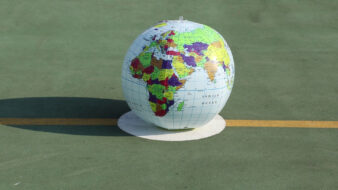
Brina Perčič, Katarina Pogačnik, Zala Špende (SVŠGUGL), Slovenia, 2022, digital format, 4′
______________
In the film, the students metaphorically present various environmental problems and what will happen if the pollution continues. The globe represents the world and shows the possible future, which threatens with the negative consequences that ordinary people will suffer due to the indifference of world leaders.
Acting: Maks B. Golec, Katarina Pogačnik, Alina Šega, Gala Sučić, Matija Pevec, Nika Zavrl, Karlina Vester, Flora Ana P. Gorinšek, Tia Clea S. Podobnik, Lea Primc, Gaja Zudič; screenplay: Maks B. Golec, Edi Halilagić, Tia Clea S. Podobnik, Flora Ana P. Gorinšek, Matija Pevec, Katarina Pogačnik, Alina Šega, Gala Sučić, Zala Špende, Lea Primc, Brina Perčič, Maša Valte, Karlina Vester, Nika Zavrl, Gaja Zudič; directed by: Brina Perčič, Katarina Pogačnik, Zala Špende; camera: Edi Halilagić, Brina Perčič, Matija Pevec, Zala Špende, Karlina Vester; sound: Maks B. Golec, Alina Šega, Gaja Zudič, Lea Primc, Flora Ana P. Gorinšek, Gala Sučić, Zala Špende; editing: Zala Špende, Lea Primc, Flora Ana P. Gorinšek, Nika Zavrl Edi Halilagić.
Mentor: Ana Čigon
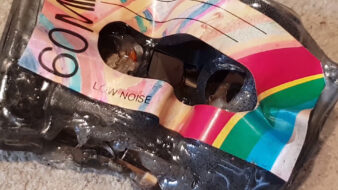
Samo Pivač (ALUO), Slovenia, 2020, digital format, 2′ 21”
______________
The video shows the cycle of destruction and creation, birth and death. These are the two points, and the path between them is life or time. Everything on Earth and in the universe has its own rhythm, birth, life and death.
Mentor: Sašo Sedlaček

Blaž Bergant (SŠOF), Slovenia, 2021, digital format, 1′ 1”
______________
The protagonist finds himself in a situation where, despite constant checking, he does not receive any messages, as he has no friends. At some point, he then decides, stops waiting, and writes the first message himself.
Mentor: Nika Oblak
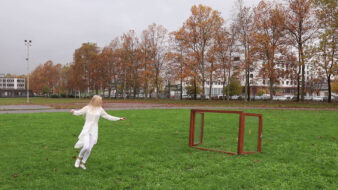
Ela M. Pirnat, Erin Pirc (SVŠGUGL), Slovenia, 2020, digital format, 2′ 37”
______________
A mysterious window invitingly calls a young man, who is in mental distress. We alternately follow his actions through the real and mental worlds. How will he decide? The film tells the story of the main character Sebastian, who is contemplating suicide. His fate is finally announced and sealed by the budding artist Maria, who appears in the story as a metaphor for the unconvincing. Throughout the film, Jolanda, wrapped in white, is also shown as a foreboding of the future, which is only the fruit of the protagonist’s imagination.
Acting: Maja Metelko, Nace Korošec, Katka F. Slosar, Maj Deu Marinšek; screenplay: Hugo A Košorok, Tjaša Pegan, Ela M. Pirnat, Erin Pirc, Katka F. Slosar, Blažka Šifrar, Ema Švalj, Karin Žerjal; directed by: Ela M. Pirnat, Erin Pirc; camera: Hugo A. Korošec, Blažka Šifrar; sound: Ema Švalj, Tjaša Pegan; microphone: Karin Žerjal, Katka F. Slosar; editing: Hugo A Košorok, Tjaša Pegan, Ela M. Pirnat, Erin Pirc, Katka F. Slosar, Blažka Šifrar, Ema Švalj, Karin Žerjal.
Mentor: Ana Čigon
Content warning: The film touches on the subject of suicide. If you are in mental distress, you can call: TOM, Telephone for children and adolescents – 116 111 (free of charge, every day 12 am – 8 pm); Samaritan confidential telephone – 116 123 (free of charge, 24 hours a day).
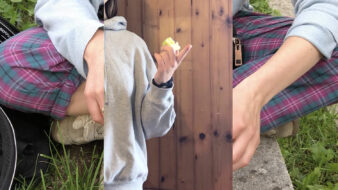
Iva Suhadolnik Gregorin (AVA), Slovenia, 2021, digital format, 4′ 35”
______________
The capitalist system convinces us again and again that we as individuals are worth only as much as we are productive. The fruits of this productivity are not important, it is only important that we are productive. Our lives become “projects” that we are constantly improving and upgrading. The system domesticates and tames us by commodifying our body and actions and perceives us as a product that always has room for improvement.The video intentionally has no story, climax, or obvious red thread. It is a set of shots where nothing happens and together they form a whole in which nothing happens. It focuses primarily on how hyperproductivism and patriarchy affect people who identify as women. How they affect them or don’t. It’s about atmospheres when there is only existence.
Acting: Lana Križaj, Alma Tana Jakoš, Eva Jurko, Gala Alica Ostan Ožbolt, Lana Berginc Predovič, Eva Gaberšek, Lara Matea Ivančič; music: Jaka Komac.
Tutors: Pepi Peter Sekulich, Miran Mohar
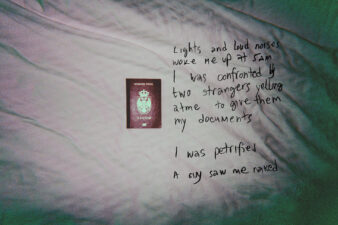
Pavle Banović (ALUO), Serbia/Slovenia, 2020, digital format, 1′ 58”
______________
The video consists of photographs and texts taken from the artist’s book of the same name – diary entries of a temporary stay in Ljubljana. What happens to identity, privacy, social and personal life by moving to another place and another country?
Mentor: Sašo Sedlaček
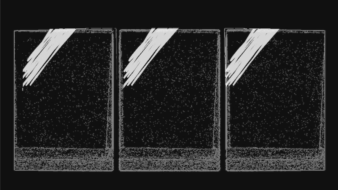
Ivana Kalc (AU UNG), Croatia/Slovenia, 2021, digital format, 24′
______________
You have stepped into a place that is like a dream. How to leave it? And more importantly – how to find a way out?
Mentors: Peter Purg, Rene Rusjan
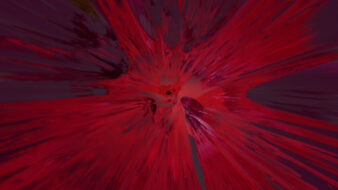
Jaka Komac (AVA), Slovenia, 2021, digital format, 2′ 59”
______________
4sqm is a project that highlights the stark contrast between the limited space in the material world, especially in times of housing crisis, and the seeming infinity of digital worlds – how a person trapped in a four-square-meter room can create vast digital landscapes. It addresses the tendency to explore digital worlds and escape the hardships and limitations of the physical world.
Tutors: Pepi Peter Sekulich, Miran Mohar
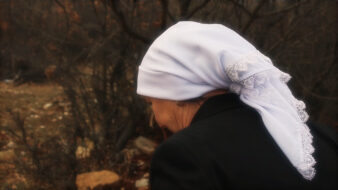
Arta Kroni (AU UNG), Slovenia, 2021, digital format, 6′ 39”
______________
The author approaches her grandmother with questions she has never before asked. The distance does not allow them to have many honest conversations.
Mentor: Boštjan Vrhovec
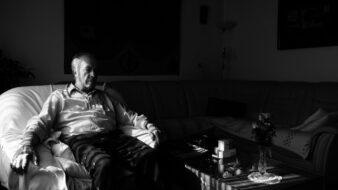
Klavdija Košir (SŠOF), Slovenia, 2019/2020, digital format, 2′ 18”
______________
The elderly widower lives alone and contemplates living with his deceased wife. He can’t get over her death, and not a day goes by that he doesn’t think of her. He prepares a bouquet of flowers every day and takes it to her grave. At lunch, he prepares cutlery in the place where his wife always sat down for lunch. Her clothes and shoes are still in the closet. The bed is made for both of them. The memory of the woman will remain until he joins her.
Mentor: Nika Oblak
Festival programme team: Vesna Bukovec, Peter Cerovšek, Igor Prassel, Varja Močnik
Guest curators: Matevž Jerman, Marina Kožul, Katrin Mundt
Professional Assistance: Miha Kelemina, Lara Plavčak
Visual identity: Vesna Bukovec
Production: SCCA-Ljubljana/DIVA Station and Slovenian Cinematheque
Supported by: Ministry of Culture of the Republic of Slovenia, City of Ljubljana – Department for Culture, Kultura nova Foundation
In partnership with: Goethe-Institut Ljubljana, EMAF, 25 FPS, The Croatian Audiovisual Centre (HAVC), The Society of Croatian Film Directors (DHFR), Emanat, Cukrarna bar, Slovenian Film Database, Academy of Fine Arts and Design Ljubljana, School of Arts, University of Nova Gorica, AVA – Academy of Visual Arts, Secondary School for Design and Photography, Ljubljana, Secondary Preschool Education, Grammar School and Performing Arts Grammar School Ljubljana
Thanks: Multiversum, Ana Čigon, Rene Rusjan, Rok Govednik, Nika Oblak, Sašo Sedlaček, Andrej Kamnik, Sanja Vatić

